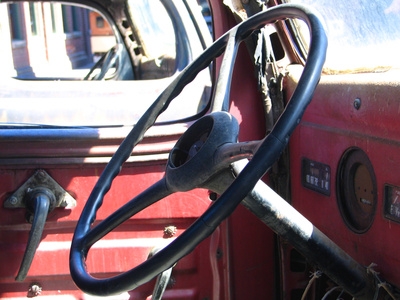
Steering wheels are one of the most fundamental components in the modern automobile, yet very few people are aware of the mechanism by which they actually operate. Steering gearboxes come in different forms, but they generally operate under the same principles.
The two most common types of steering gearboxes are "rack and pinion" and "worm gear" arrangements. Both operate by using gears to translate the rotation of the steering wheel into the sideways motion of a shaft that connects the two front wheels. While rack-and-pinion systems are very simple, the distinct advantage of worm gears is the strength of their construction.
Hydraulics can be used to aid the movement of the steering wheel by applying pressure to the steering system. A hydraulic pump mounted on the engine builds up fluid pressure and once the driver turns the steering wheel, pressure is released and used to help turn the steering system. An electric pump may also be used to reduce the force required to turn the wheels.
Manual steering boxes are relatively rugged in construction, whereas power steering can be prone to leaking fluid or low fluid levels. Any steering component malfunction can cause the vehicle to be uncontrollable and thus should be checked by a professional immediately.